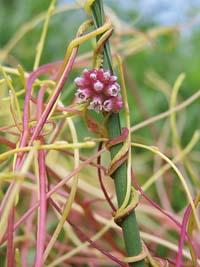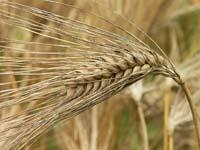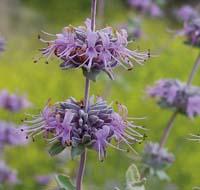Green relations Green relationships

The parasite Cuscuta lives from the sweat of other plants. The stem, which is usually yellow, orange or red, is wound around the victim and inserts a kind of sting to absorb sweat. From temperate to tropical regions, it is spread throughout the world and is the headache of many peasants. It attacks tomatoes, carrots, onions, citrus, pancakes, etc. In many countries, by law, it is necessary to ensure that the seeds sold for cultivation do not have Cuscuta.
According to Pennsylvania researchers, knowing how the parasite finds the host can be useful to combat it. After several tests with tomato plants, they discover that it detects some volatile substances that the tomato releases. It attacks in the same way a piece of rubber impregnated with these substances.
It was thought that he found the hosteleros at random, but that research made clear that he makes an active search. At first it turns and when it detects a substance that indicates the presence of the victim it is directed towards it. The researchers have been surprised by the precision and speed of the attack.
And that's not all, they say it's capable of making decisions. And they have also tested with wheat, and have seen that when they put the wheat and the tomato to choose goes in search of the tomato. Although it attacks wheat when there is no other alternative, a compound issued by the crane chases the Cuscut.
Fight for survival

Cuscuta recalls another weed well known to the farmers here: the left (in fact, two very similar herbaceous species can be behind this common name: Convolvulus arvensis and Calystegia sepium ). We do not know if the left will also have the ability to 'smell' its victim, but when it finds it rises above them, like Cuscuta, winding. They don't get punches -- the left realizes photosynthesis -- but their growth is extremely fast and, sometimes, totally covers the victims.
These are the most common relationships between plants: light, the struggle for water and food. These competitions are often physical: the one that grows faster, or the highest, or the one that has more or less roots, or the one that has the capacity to withstand specific conditions better than the others, it is easier to access the resources you need.
This competition is often tough and some competitors leave out of play to others. This can be the case of the left, when it leaves the guest completely covered and without light, under these conditions the guest has no chance of growing.
Another example is closed forests. If you've ever been in a pine, you've been able to see that the soil covered by leaves in the form of a needle is usually quite "clean", that is, besides the pines it doesn't grow much more. On the one hand, the pines pass very little light and, in addition, the fallen pine needles release acids when decomposing. Advancing in an environment of these characteristics is impossible for many plants.
Chemical War Chemistry

Chemistry is another weapon that plants use to compete. Some plants poison their competitors. Some of the molecules that produce them influence the growth and development of the surrounding plants. This chemical war between plants is known as allelopathy.
Allotheopatic substances are usually secondary metabolites, that is, secondary products of the plant metabolism. Many of them are toxic to plants: some prevent the germination of seeds, others influence photosynthesis, etc.
Juglon produced by walnuts (the Juglandaceae family) is one of the most well-known allopathic substances. Walnuts accumulate in roots, leaves, branches and fruits. When juglone passes to the soil, it influences the metabolism of some plants. It does not affect all plants equally, but for some species it is impossible to live under the nogales or around them. The same applies to eucalyptus and other species.
Most studies on allopathy are carried out in the agricultural field. Also analyzed are the interactions between cultivation plants and weeds and between crops. Rice is one of the plants that has been investigated most in this field, and have seen that it has a great allelopathic capacity.
On the other hand, alelopatic substances can be useful as regulators or growth herbicides, although most known substances are too weak for it.

Who is there?
It is clear, therefore, that plants, like animals, also live in a competition in which they have several weapons. But having weapons is not everything, it is very valuable to get information about what is or works around you. Animals are usually skilled, have senses. Plants are also able to collect this valuable information. We have seen that Cuscuta "ole" the victims. It is not the only one with these skills.
For example, some plants are able to know if they have competence in the environment, detecting small variations of light. Plants absorb and reflect the light of certain wavelengths, which allows some plants to know if there is someone around. Barley, for example, when detecting these changes in the spectrum of light caused by the surrounding plants, extends the bids further and accelerates the development of the flowers.
Others obtain the presence of the competition detecting changes in water or food in the area or chemical signals found in the soil, regulating their growth according to it.
But Cakile is a drinker who still goes further. Researchers at the McMaster University of Ontario explained in a paper published last year that this plant is able to meet their families.

Specifically, it has been observed that the joint planting of specimens of the same mother in the same container produces less development of roots than together with specimens of different mothers. Researchers are unclear whether relatives reduce the development of their roots or non-related specimens increase that development in the fight for resources.
It is clear that these plants give a different response depending on the kinship that is around them and, therefore, they are able to detect that kinship. But how they do it is still a mystery to researchers. Their hypotheses indicate that there may be some chemical signal involved.
Since the publication of this study, similar conclusions have been obtained for three other species. Scientists are surprised by these discoveries. And no wonder, because it is not easy to understand how plants can do everything they do without eyes, ears, nose, mouth and brain.







